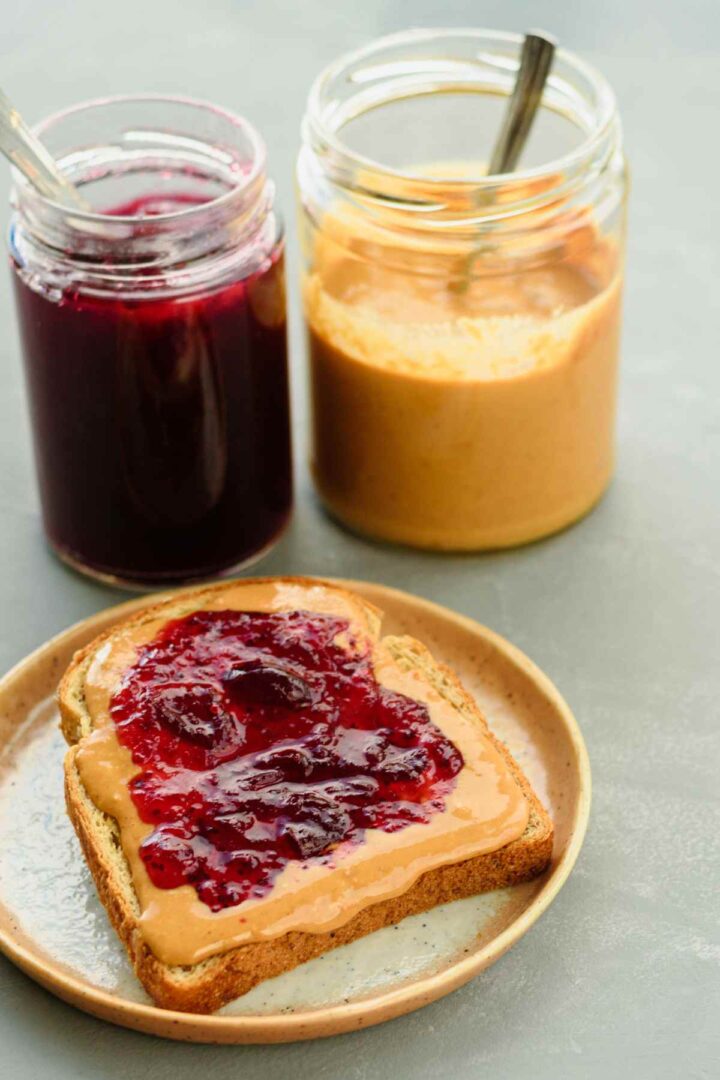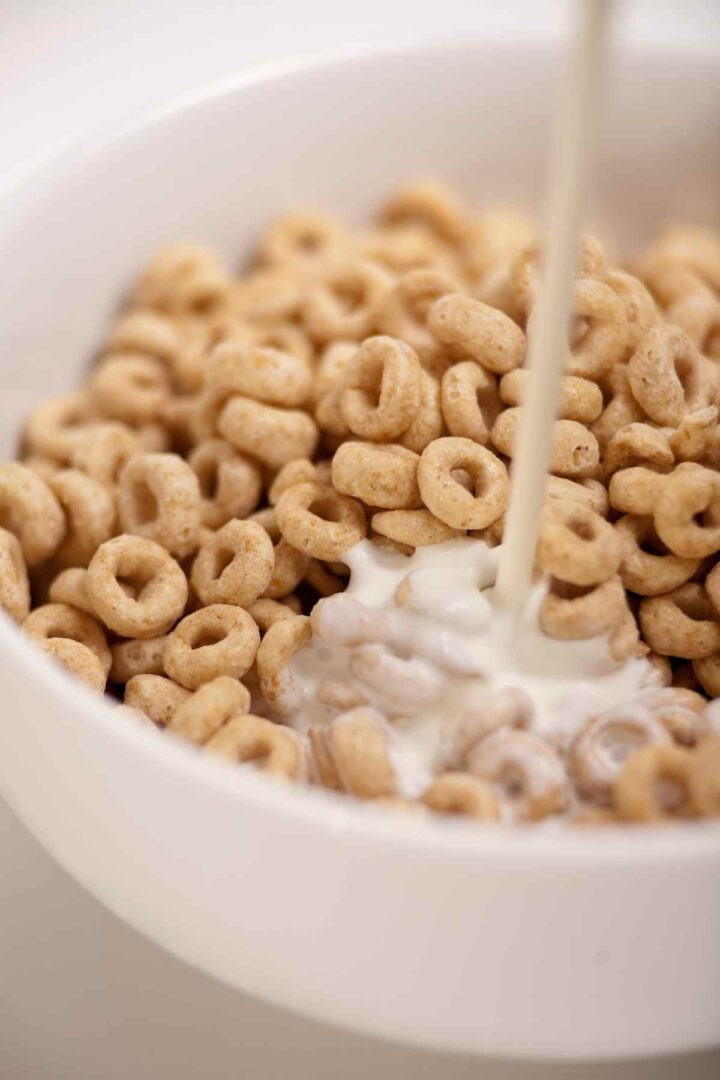What to Eat When You Have No Appetite (41 Foods)
Wondering what to eat when you have no appetite? Save this list of 41 foods to stay nourished when you don’t feel like eating.

It’s tough to know how to handle a low appetite.
So many people are working toward weight loss, thinking about protein, and generally just trying to eat less… so what do you do when your drive to eat is nonexistent?
That’s what we’re talking about in this article. As a Registered Dietitian, I’ll discuss why low appetite happens, what you should do about it, and share a list of 41 foods to help you stay nourished when you simply don’t feel like eating.
If you want to know what to eat when you have no appetite, you’re in the right place.
What causes low appetite?
Here are some common causes of low appetite:
- Stress
- Genetics
- Medication
- Getting older
- Consuming caffeine
- Depression or anxiety
- Short-term illness or infection
- Chronic diseases or long-term illness
There’s a lot that can influence your appetite! Whether you’re born with a lower appetite or experiencing short-term stress or illness, your desire to eat can be fickle.
And remember, this list is not exhaustive. Other factors like changes to routine, exercise, or even travel might make you want to eat less too.
Is it low appetite or are you just not hungry?
By definition, your appetite is your desire to eat food.
It’s a little different from hunger because it’s more about how much you want to eat food versus the physical sensations that come along with needing it.
But honestly, the distinction is irrelevant. Any sudden or long-term change in appetite could be cause for concern.
A good rule of thumb? If your appetite or intake is changing, it’s lasting longer than a few weeks, and/or it has the potential to impact your health… then it’s probably time to check-in with your healthcare team!
Is it your appetite or are you feeling guilty for eating as much as you need? Uncover if your relationship with food needs work.
Should you eat when you have a low appetite?
Short answer: yes.
Long answer: it’s so important to stay fueled, especially if your physical or mental health isn’t optimal.
Eating regularly ensures your body gets the energy (calories!), macronutrients, and micronutrients it needs to fight illness, maintain muscle mass, and reduce mental stress.
If you’re experiencing a super temporary dip in appetite, it’s okay to rest and listen to your body. But if it’s lasting any longer than a few hours, I’d encourage you to fuel with what you can using the tips in this post.
What nutrients to eat when you have no appetite
When you don’t feel like eating, getting enough calories and protein is essential.
Protein is especially important because it can help you fight infection or disease, and minimize any losses to muscle mass you might experience when you’re eating less.
But if you’ve ever experienced a low appetite, you know how challenging it can feel to force food down when you don’t feel like it.
With that in mind, you might find yourself going against usual healthy eating guidelines.
Eating calorie-dense foods that are higher in fat, sugar and/or salt isn’t what us dietitians would usually recommend. But with a truly low appetite, these are the exact foods that can help because they taste good and deliver more calories with less volume.

41 Foods to eat when you have no appetite
If you’re experiencing low appetite, choose foods that are high in calories and protein as much as you can.
There’s lots of examples of good foods for low appetite below.
But if you’re struggling with these examples, just go for whatever is appetizing. Protein is important and helpful, but any food is better than none when you’re struggling to eat enough.
Meals for low appetite
- Pizza
- Canned beans
- Chicken nuggets
- Burgers with toppings
- Omelets with cheese
- Canned soups or chili
- Cereal with whole milk
- Cheddar broccoli soup
- Boxed mac and cheese
- Grilled cheese sandwich
- Pasta with creamy sauces
- Peanut butter sandwiches
- Pasta with butter and cheese
- Pancakes with butter and syrup
- Frozen pierogies with sour cream
- Bagel with cream cheese, or peanut butter
- Toast with peanut butter, cheese, or butter
Snacks for low appetite
- Muffins
- Cookies
- Pudding
- Ice cream
- Dry cereal
- Granola bars
- Banana bread
- High fat yogurt
- Nuts and seeds
- Hard boiled eggs
- Cheese and crackers
- Banana and nut butter
- Tortilla chips and guacamole
- Peanut butter and jelly sandwich
- Chia pudding with protein powder
Cottage cheese toast is perfect for low appetite because it’s got plenty of protein. Choose whole milk cottage cheese for extra calories!
Drinks for low appetite
- Juice
- Soy milk
- Whole milk
- Milk shakes
- Hot chocolate
- Whole milk lattes
- Meal replacement drinks
- Premade protein shakes
- Smoothies with nut butter
Tips to eat when you have no appetite
Anyone who has experienced low appetite will know that food ideas are just the half of it.
It’s one thing to know what to eat. But it’s a whole other challenge to try to keep yourself fed when the thought of food is making you feel sick.
Here are some tips to help you eat more when your appetite is low.
- Choose foods you like.
The more appetizing, the more likely you’ll be to actually eat it. - Eat calorie-dense foods.
It’s not what we’d recommend for weight loss, but it is what’s needed for low appetite. - Prioritize protein.
It’s essential to stay healthy, fight infection, and prevent muscle loss. - Eat processed foods.
They’re more calorie-dense and tasty, so they’re great for low appetite. - Drink your calories.
Shakes, smoothies, and drinkable supplements will be your low appetite BFF. - Eat frequently.
This is the time to snack and graze. Keep yummy snacks on hand to eat all day. - Eat with friends.
It can be easier to eat when you’re enjoying time with friends and distracted by conversation. - Stock up on easy foods.
Reduce any barriers to eating by choosing premade and convenient foods. - Work with a professional.
Get help from a Registered Dietitian to prevent nutrient deficiences.
Is there anything you’d add to this list? Leave a comment below!
Final thoughts
Low appetite can be caused by genetics, stress, illness, age, or changes to routine.
It’s tough to force yourself to eat. But if you’re experiencing low appetite for longer than a few days, it’s important to make sure you’re staying nourished. Eating less than you need, especially when you’re sick, might hinder your healing or contribute to muscle loss.
Save this list of 41 foods to eat when you have a low appetite. You’ll also want to bookmark the 9 extra tips to eat when you have no appetite from the bottom of this article.
And make sure to reach out to a Registered Dietitian or health professional if your appetite is changing.

